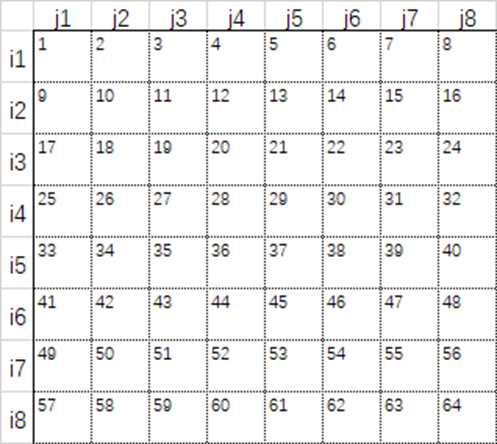Dear support team,
I am working on a special network flow problem, something like a n*n grid, and I am having difficulties to define some of its sets. The problem is stated as follows:
Given a directed graph G = (V,E). Each cell of the n×n grid corresponds to a node which is referred to by (i,j). The set of neighbor nodes of a node (i,j) is given by N_{i,j} = \{(i−1,j),(i+1,j),(i,j −1),(i,j +1)\} \cap V . The set E of edges is then obtained by defining an edge (i,j,k,l) between any two neighbor nodes (i,j) \in V and (k,l) \in N_{i,j}.
What I am trying to obtain the corresponding sets is:
set i / i1 * i8 /;
set j / j1 * j8 /;
alias (i,ii),(j,jj);
;
set V(i,j); V(i,j)= yes;
display V;
;
set nb(i,j,ii,jj);
nb(i-1,j,i,j) = yes;
nb(i+1,j,i,j) = yes;
nb(i,j,i,j-1) = yes;
nb(i,j,i,j+1) = yes;
display nb;
However, I am unsure if the result can correspond to what I expected in the following 8*8 grid: (for summarizing, I omitted the rest of the values)
set N[1,1] = (1,2) (2,1);
set N[1,2] = (1,1) (1,3) (2,2);
set N[1,3] = (1,2) (1,4) (2,3);
set N[1,4] = (1,3) (1,5) (2,4);
set N[1,5] = (1,4) (1,6) (2,5);
set N[1,6] = (1,5) (1,7) (2,6);
set N[1,7] = (1,6) (1,8) (2,7);
set N[1,8] = (1,7) (2,8);
…
Also, I need to define the source and sink nodes as a pair-node like:
Source = (2,1) (2,2) (2,5) (2,6) (6,2) (8,1) (8,5);
sink = (2,3) (2,7) (5,3) (5,5) (6,8) (7,8) (8,8);
where the first element in the source, (2,1), is referred to as the start point of the first commodity, and the first element of the sink, (2,3), would be the endpoint of the first commodity, And so on.
I was wondering if, how can I define the correct corresponding sets?
Best regards
Abbas
